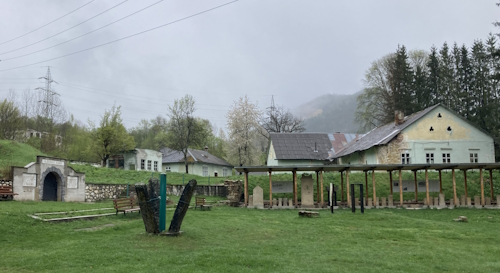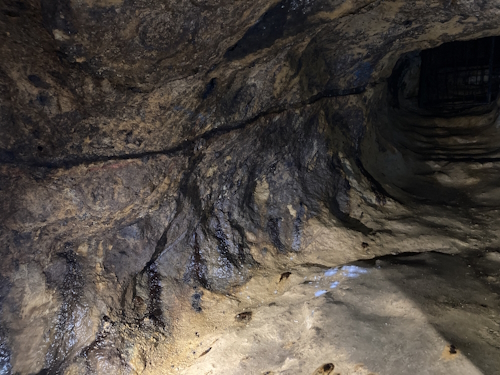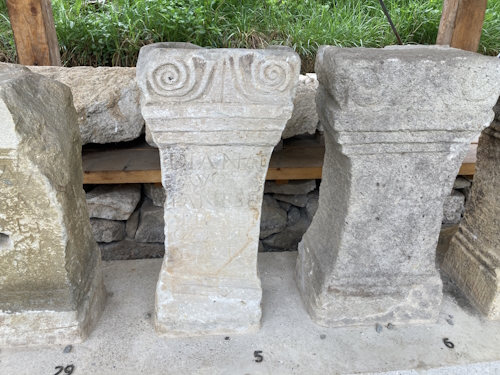Blog WHS Visits
My #900: Roșia Montană
For some reason, #900 does not feel as much of an achievement as #800 – maybe because I am already planning toward #1000. It certainly never has been a goal in itself. Still, visiting 900 means having covered 75% of all WHS at the time of writing!
I did not ‘engineer’ #900 - my European to-do list is tiny, and my choices for a short getaway in April virtually were between St. Kilda (wrong season), Odesa (rocket attacks), or Rosia Montana. Roșia Montană Mining Landscape popped up as a WHS in 2021 after I had done the rest of Romania already in 2010. Two nearby TWHS also are up for nomination this year, so it was an easy choice. A direct WizzAir-flight between Eindhoven (NL) and Cluj-Napoca (the only international airport in NW Romania) was an added advantage.
Roșia Montană has grown into something of a ‘cult site’ in the WH Community, while it seems rarely visited by ‘normal’ tourists. Several sources had suggested that if I wanted to see the underground mines from Roman times (that’s where the OUV is), I should announce my visit beforehand. It was funny to read the many Google Reviews about the erratic opening hours of the mining museum (officially Tue-Sun 9-16, mostly Tue-Fri between 9 and 14.30 but on “some days they don’t show up”). A few days before I e-mailed them in English and (Google Translated) Romanian on the address given on the official website to communicate when I planned to visit. I got a swift reply that they would be waiting for me.
Getting there proved to be easy by rental car. Just at the point that my Google Maps navigation announced “You have arrived”, I saw a sign pointing to the mining museum on the left side of the road. But that’s about it for directions – no “brown signs” and no UNESCO WH logo. At 10.30 a.m. on a rainy Wednesday morning, I found the gate to the museum compound closed and a small black dog barked its head off to this lonely visitor. The door to the right was open though and I told the man who appeared that I wanted to visit the mine.
He seemed to remember having received my e-mail, although he was still visibly concerned about how to apply the ”5 people minimum for a tour”-rule (I had already told him I would pay for 5 – entry is 20 Lei, so 5x is about 20 EUR). When that was settled (I actually got 5 tickets!), he called the guide. Some people will be sad to hear that the “very unique engineer-guide” as cherished by other community members (and labelled a xenophobic populist in Google Reviews) seems to have been replaced by a professional young guide who speaks good English.
The tour was to last about an hour and comprised three parts. The guide spoke virtually non-stop, more giving a lecture than interacting with the guest(s). We started underground. There’s a long downward flight of stairs from the communist times to tackle before you enter the part excavated by the Romans. No helmets here and no elevator! The main difference between the work of the Roman miners and those of later periods in Rosia Montana’s mining history is that the Romans worked more precisely and efficiently. Using only a hammer and chisel they did not make as wide spaces as did those who used dynamite – they did just what was needed to reach the gold veins. The entrance the Romans used to get this deep underground has been lost.
Above ground, we did a tour of the machines that are exhibited in the field next to the mine entrance – all of a later date of course, but it gives you an idea of how important gold mining stayed for this region until deep into the 20th century. The area was littered with private mines until the communist state mine company put an end to that. This field also includes the lapidarium, where Roman votive altars and gravestones are kept that were found in the surroundings. The main archeological discoveries inside the Roman mine were clay tablets describing contracts, but unfortunately, they have been scattered around the museums and universities of the former Habsburg Empire. They are likely not to be on display either because of their fragile nature.
We finished the tour in the museum, housed in one of the buildings of the former state mine company. Photos show locals searching for gold in the rivers and mining at altitude in the open cast mines. The workers also included children. No word was said during the tour about the controversial Canadian mining permits and the recent outcome of the arbitration process with Romania not having to pay them any damages. When I asked about it, the guide said that he did not know of any plans for further developing the tourism potential of the Roman mining sites around Roșia Montană.
When I left the museum building, the guide had disappeared as had the man at reception. Only the small black dog was still there and insisted on chasing me out.
Els - 21 April 2024


